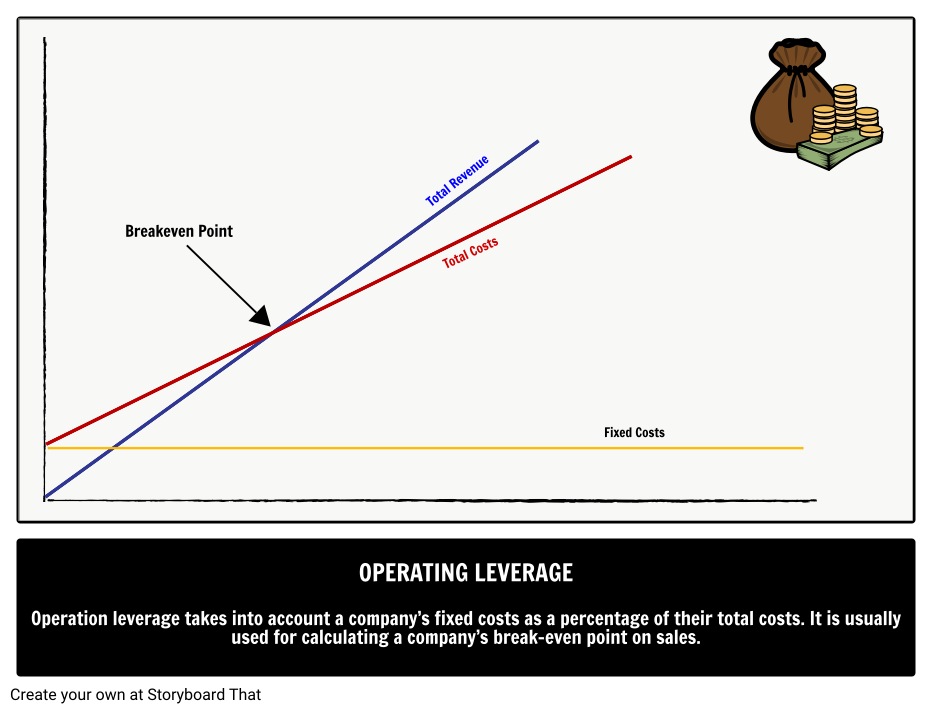How to Calculate Operating Leverage: 8 Steps with Pictures

In other words, there are some costs that have to be paid even if the company has no sales. These types of expenses are called fixed costs, and this is where Operating Leverage comes from. As it pertains to small businesses, it refers to the degree of increase in costs relative to the degree of increase in sales. The enterprise invests in fixed assets aiming for the volume to produce revenues that cover all fixed and variable costs. Operating leverage helps to determine the reasonable level of fixed costs, whereas financial leverage helps to ascertain the extent of debt financing. Thus, financial leverage measures the relationship between the operating profit (EBIT) and earning per share (EPS) to equity shareholders.

How Does High Operating Leverage Affect My Business?
The degree of operating leverage (DOL) is a multiple that measures how much the operating income of a company will change in response to a change in sales. Companies with a large proportion of fixed costs (or costs that don’t change with production) to variable costs (costs that change with production volume) have higher levels of operating leverage. The DOL ratio assists analysts in determining the impact of any change in sales on company earnings or profit.
Operating Leverage: What It Is, How It Works, How to Calculate
- For example, mining businesses have the up-front expense of highly specialized equipment.
- DOL measures how sales changes affect operating income, while financial leverage measures the impact of debt on earnings per share.
- At the same time, a company’s prices, product mix and cost of inventory and raw materials are all subject to change.
This means a 10% increase in sales would lead to a 26.7% increase in operating income. High operating leverage means that small changes in sales can lead to significant changes in operating income. This can be beneficial when sales are increasing but risky when sales are declining.
Operating Leverage Formula: How to Calculate Operating Leverage
This does not only impact current Cash Flow, but it may also affect future Cash Flow as well. Understanding DOL allows managers to make informed decisions about pricing, production, and investment by evaluating the potential impact of sales fluctuations on profitability. For instance, a 10% increase in sales for a company with low DOL might result in a less than 10% increase in EBIT, indicating a more stable, albeit less responsive, profit scenario. Although you need to be careful when looking at operating leverage, it can tell you a lot about a company and its future profitability, and the level of risk it offers to investors. While operating leverage doesn’t tell the whole story, it certainly can help. Investors can come up with a rough estimate of DOL by dividing the change in a company’s operating profit by the change in its sales revenue.
One notable commonality among high DOL industries is that to get the business started, a large upfront payment (or initial investment) is required. Companies with higher leverage possess a greater risk of producing insufficient profits since the break-even point is positioned higher. For both the numerator and denominator, the “change”—i.e., the delta symbol—refers to the year-over-year change (YoY) and can be calculated by dividing the current year balance by the prior year balance and then subtracting by 1. Therefore, it is suggested to have a trade-off between debt and equity so that the shareholders’ interest is not affected adversely. The company has issued 10% preference shares of $500,000 and 50,000 equity shares of $100 each.
Just as operating leverage results from the existence of operating expenses in the enterprise’s income stream, financial leverage results from the presence of fixed financial charges in the firm’s income stream. Operating leverage is used to determine the breakeven point based on a company’s mix of fixed and variable to total costs. As stated above, in good times, high operating leverage can supercharge profit.
This ratio summarizes the effects of combining financial and operating leverage, and what effect this combination, or variations of this combination, has on the corporation’s earnings. Not all corporations use both operating and financial leverage, but this formula can be used if they do. A firm with a relatively high level of combined leverage is seen as riskier than a firm with less combined leverage because high leverage means more fixed costs to the firm. In the base case, lease renewal letter and extension agreement the ratio between the fixed costs and the variable costs is 4.0x ($100mm ÷ $25mm), while the DOL is 1.8x – which we calculated by dividing the contribution margin by the operating margin. Companies with a high degree of operating leverage (DOL) have a greater proportion of fixed costs that remain relatively unchanged under different production volumes. The degree of operating leverage is a formula that measures the impact on operating income based on a change in sales.
A higher proportion of fixed costs in the production process means that the operating leverage is higher and the company has more business risk. Operating leverage occurs when a company has fixed costs that must be met regardless of sales volume. When the firm has fixed costs, the percentage change in profits due to changes in sales volume is greater than the percentage change in sales. With positive (i.e. greater than zero) fixed operating costs, a change of 1% in sales produces a change of greater than 1% in operating profit. Essentially, operating leverage boils down to an analysis of fixed costs and variable costs. Operating leverage is highest in companies that have a high proportion of fixed operating costs in relation to variable operating costs.



Không có bình luận